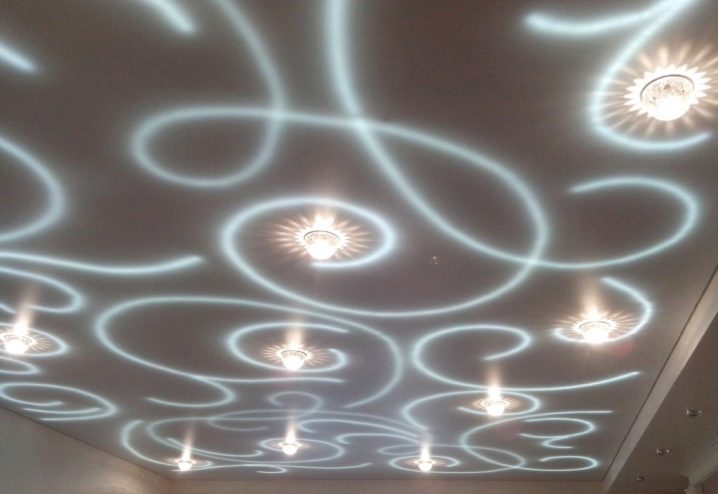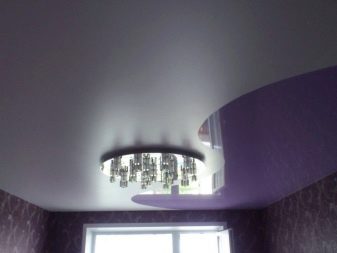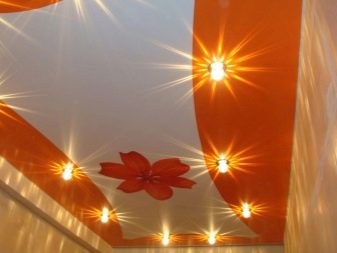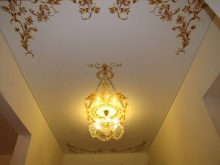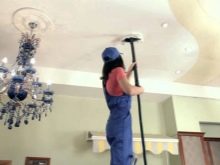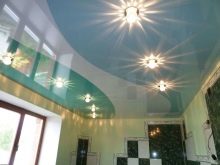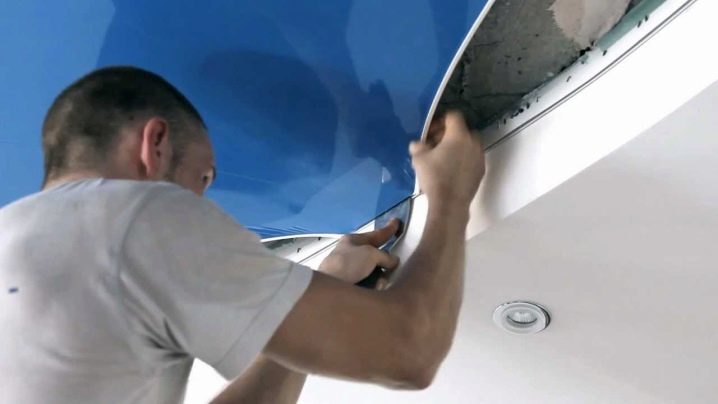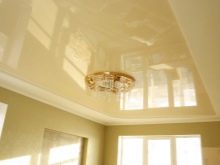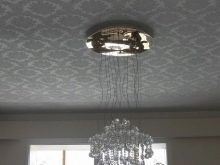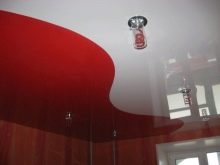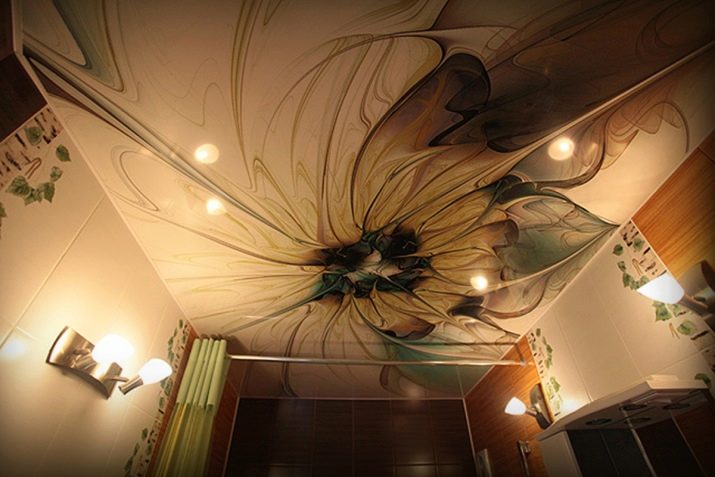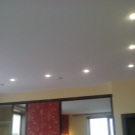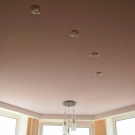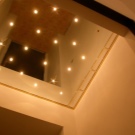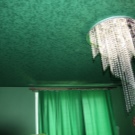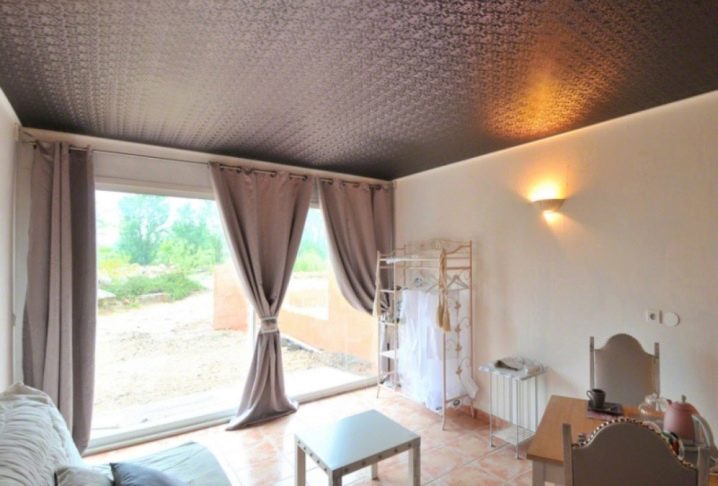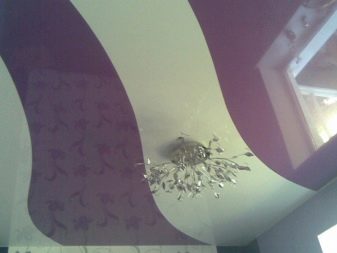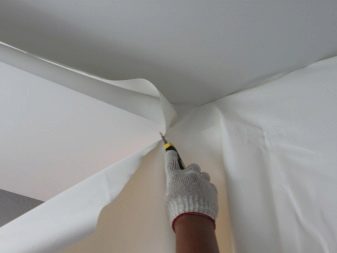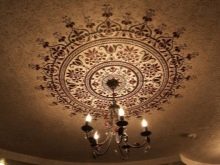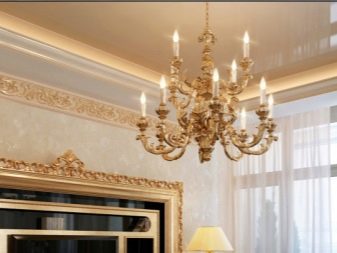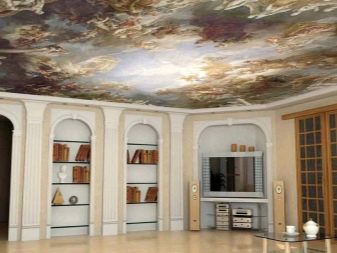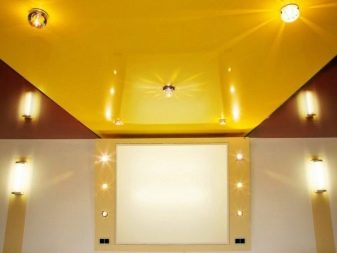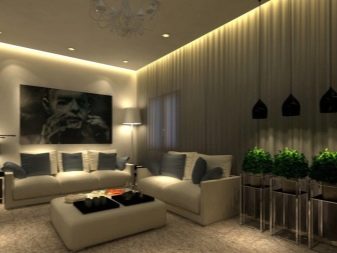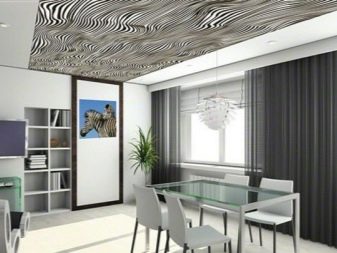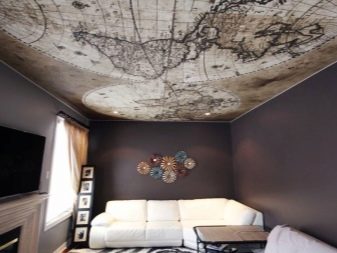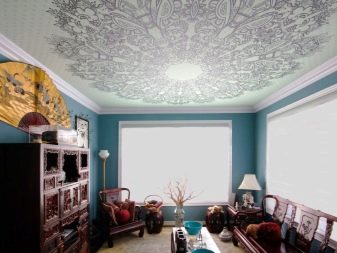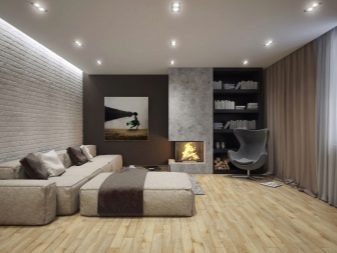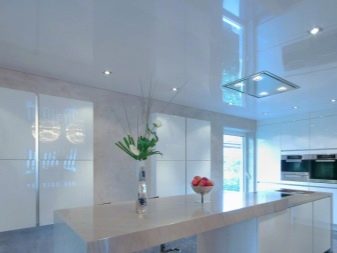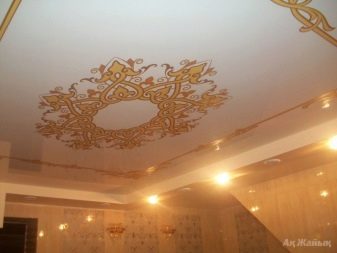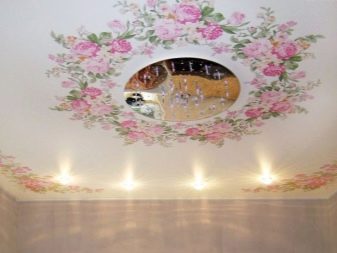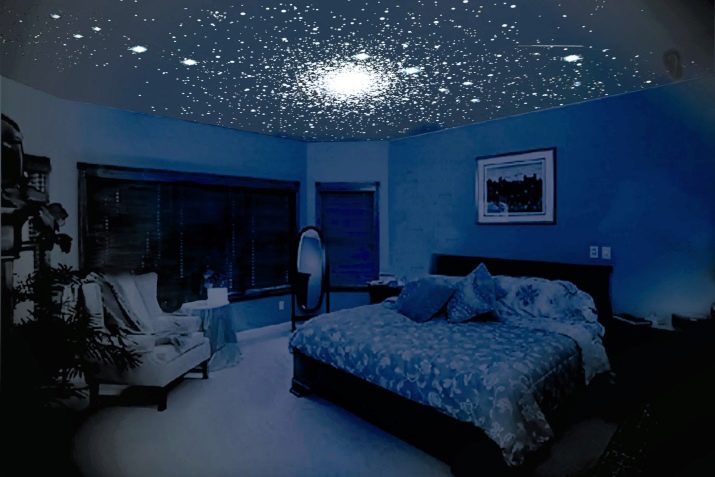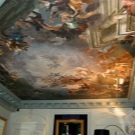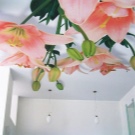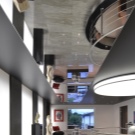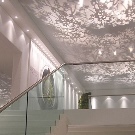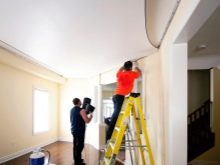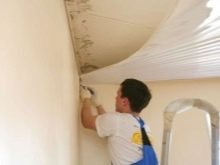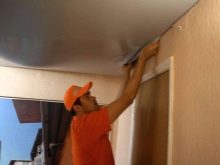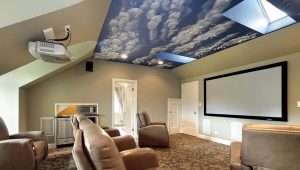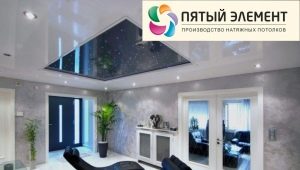Single-level stretch ceilings: views and step-by-step installation instructions
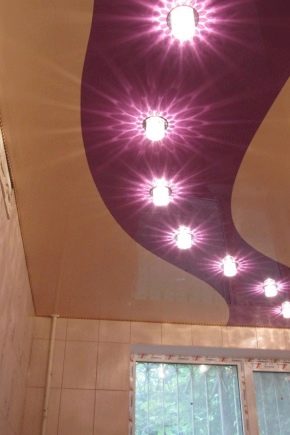
Single-level stretch ceilings - a kind of decorative trim, featuring an excellent appearance for a reasonable price. In addition, it does not require thorough repairs, accompanied by all the inconveniences.
Special features
The main advantages of suspended ceilings include the following features:
- Minimally reduces room space in height
- ideally flat and smooth surface, excellent appearance;
- a wide range of different textures and colors of the surface;
- installation work does not require significant physical, material and time-consuming - no need to remove the old finish, level the surface, remove all the furniture, and at the end to clean the room from debris;
- hides the defects of the ceiling, passing cables and pipes;
- the powerful waterproofing properties of a PVC-based suspended ceiling can save a room in case of water flooding by its neighbors living on top;
- the coating has an antistatic effect, which reduces the amount of dust in the room;
- the materials from which suspended ceilings are made are characterized by a long service life;
- the coating is resistant to temperature fluctuations;
- economically suspended ceiling is several times cheaper than any other types of finishing works;
- the surface of the stretch ceiling is easily cleaned from dust and dirt.
The disadvantages of single-level stretch ceilings can be counted:
- the coating material is very vulnerable to piercing and cutting objects;
- can not be used in rooms with low temperatures - quickly becomes useless;
- Ceiling tensioning works require accuracy and skills: self-assembly is likely to lead to sagging of the coating, so it is better to invest in the work of professionals.
Types of stretch ceilings
Single-level suspended ceilings differ in the production of materials, the type of cut and the different texture and color, which determines their use depending on the interior design.Thus, single-level suspended ceilings can be divided into several types.
By production material
They are divided into the following categories:
- film;
- tissue.
The material from which the single-level suspended ceiling is made determines the operational properties of the coating, its mounting features and the appearance of the product.
Film
The so-called French ceilings based on PVC are widespread due to their pleasant appearance and wide availability. They are easily mounted by the shrinking method. There is a large selection of different patterns and colors.
By type of texture film ceilings are:
- glossy;
- matte;
- satin;
- mirror;
- suede.
Such ceiling coatings have a low resistance to mechanical stress - the coating is easily deformed - and at the same time they are relatively inexpensive.
Fabric
Stretch ceilings of this type are made from woven canvas treated with various substances to impart certain performance qualities. The characteristic features of such ceilings include the fact that they are relatively durable, resistant to temperature fluctuations and more expensive than film.
By type of cut
They can be divided into the following types:
- suture;
- seamless.
Almost all fabric cloths belong to the seamless type, in contrast to the film variants, which recently began to be made from a single piece of fabric, before that they were only suture.
Suture
The following features:
- PVC coating material;
- according to the type of attachment, there are harpoon and bezgarpunnymi, and harpoon ones are also divided into spatulas and gapless;
- visually, the seam can be seen or hidden;
- there is an insignificant risk of seam divergence in violation of production technology
Seamless
Benefits:
- polyester or polyurethane resin coating;
- fasten without charcoal method.
Application and Styles
Also, single-level suspended ceilings can be divided by the execution of texture and color, depending on the style of design in which they are used. Typical options include the following styles:
- classical;
- modern;
- high tech;
- fusion;
- minimalism;
- ethno.
Classical
In the classical style the use of single-level stretch ceilings due to their perfect flatness and smoothness. They emphasize a strict and laconic design, embodied in traditional forms with emphasized restraint.
In such an interior it will be appropriate to look stretch ceiling with such features:
- it is textured - satin, matte, sometimes glossy;
- color performance corresponds to the design - white and pastel colors; it should be borne in mind that the ceiling covering should have a lighter shade than the walls;
Decorate the suspended ceiling can curls or a simple geometric pattern that fits into the overall picture of the design and emphasizes its specificity.
Modern
Modern style may include such an element of decor as a suspended ceiling. It will emphasize the smoothness of curved lines and the refined elegance characteristic of this type of decoration. A single-level stretch ceiling with such aesthetic qualities will fit into the design of an Art Nouveau room design:
- in terms of texture, a glossy surface will be used, highlighting the originality of the refined style;
- from the color spectrum, pearl-gray, turquoise, mauve, dull green are often used;
- Perhaps the presence of motifs of nature in patterns and drawings.
High tech
Stretch ceilings successfully complement the design solution in high-tech style, which is characterized by conciseness of lines and shapes,metallic luster of the materials used, modern equipment, which is part of the decor, and simplicity and restraint of common elements.
The aesthetic properties of high-tech style suspended ceilings include:
- textured - it is a glossy surface with a metallic sheen;
- colors such as white, graphite gray, various colors with a metallic effect would be appropriate;
- images and patterns should convey the spirit of the modern tech world.
Fusion
A style combining simple and luxurious elements of decor will be successfully complemented by a stretch ceiling with a non-standard texture of the canvas, for which such aesthetic features are characteristic:
- the coating with a specific texture will perfectly fit into the interior, you can use such coating options as imitating natural stone, for example, marble, imitating expensive material, for example, velvet or natural leather;
- the color design of the canvas should harmoniously complement or contrast the color scheme of the design.
Minimalism
The style is distinguished by severity, simplicity and straightforwardness, verified by the proportionality of the decor elements,their small amount. In it stretch ceilings will naturally correspond to the characteristic features of the style.
The most suitable qualities of stretch ceilings in this case will be:
- in terms of texture, these are satin sheets, but with a certain specificity of the interior, matte surfaces are also used, but the gloss will be completely inappropriate;
- in terms of color, it is better to use monotone dull colors, for example, white or gray, also pastel shades can be used;
- it is unusual for a style to use a large number of luminaires built into the ceiling;
- patterns and images are unusual for the ascetic nature of minimalism.
Ethno
This style is very diverse - its performance in both color and textural terms depends on the chosen ethnic orientation. In this case, single-level stretch ceilings perfectly emphasize the chosen cultural orientation of the design.
Characteristic features of the ceiling will be such features:
- textured performance - matte or satin surface, sometimes use a glossy version;
- the color range in this design is very diverse and corresponds to the chosen style; two- and three-color canvases are well suited;
- patterns and designs characteristic of the ethnic design theme are widespread.
Design options
Even in the absence of a stylized interior, the canvas of the stretch ceiling itself can bring a decorative effect and improve the aesthetic appearance of the room. On the market there are many different extraordinary coverage options, performed in this form:
- the panels imitating the "starry sky" look great in the evening and at night, will bring the atmosphere of open space and being in nature;
- canvas with artistic prints;
- 3D images and photo printing;
- textured canvas will give the interior solidity, high cost of designer finishes, will delight the excellent aesthetic qualities of any guests;
- an interesting solution is a translucent canvas with installed lights, creating a frosted glass effect; give the interior an atmosphere of relaxation, comfort and peace, contribute to relieving stress;
- suspended ceiling with a surface that mimics the mirror, visually increase the size of the room; Particularly relevant for rooms with low ceilings that press down on their heads.
Assembly work
Installation of single-level stretch ceilings is carried out in a short time without special preparation of materials or preparation of the working surface. The types of fasteners used to secure the fabric in the room may vary depending on the specific product. Fabric cloths are most often installed on wedge fastenings, and film options are fixed on harpoon baguettes. In this case, fabric products are simply mounted under the ceiling, while the film “sits down” after the previous heating of the material.
The work stages are as follows:
- Markup. First you need to measure and mark the place of installation fasteners. Film canvases are installed with an air gap of 15 mm, and fabric products are fixed at a distance of 40-50 mm from the ceiling.
- Installation mount. According to the marked dimensions, a baguette is mounted with the appropriate type of fastener. It is attached to the wall with screws with a pitch of 200 mm.
- Suspension canvas. The product is fixed in the clips at the corners of the room.
- Heat (for film coatings only). PVC canvases are heated with an appropriate tool, such as a heat gun or a building dryer.
- Refill canvas. Fabrics need to be refilled, moving from the corners to the center, and PVC - from the center to the corners of the room.
- The final. With a wedge type of holders, excess matter is cut off, aluminum strips are put in place for fixing, and with harpoon fixtures, plinths are installed.
How to install a single-level stretch ceiling, see the following video
